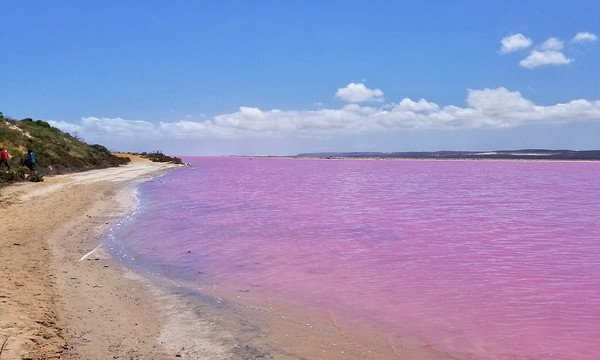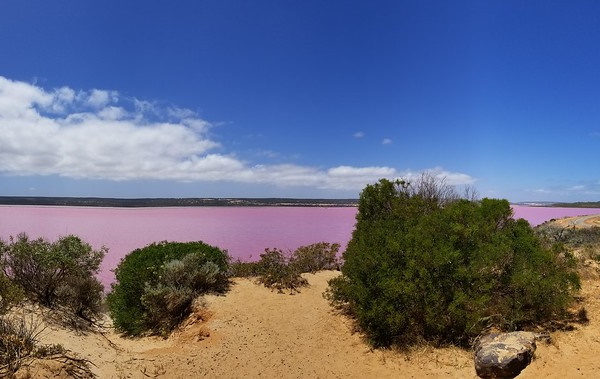
Western Australia’s Hutt Lagoon is pink as a blushing bride and saltier than a punch-drunk sailor on shore leave, thanks to an abundance of Beta Carotene-producing algae who consider the lagoon’s extreme salinity to be just peachy.
Rosy Creeks
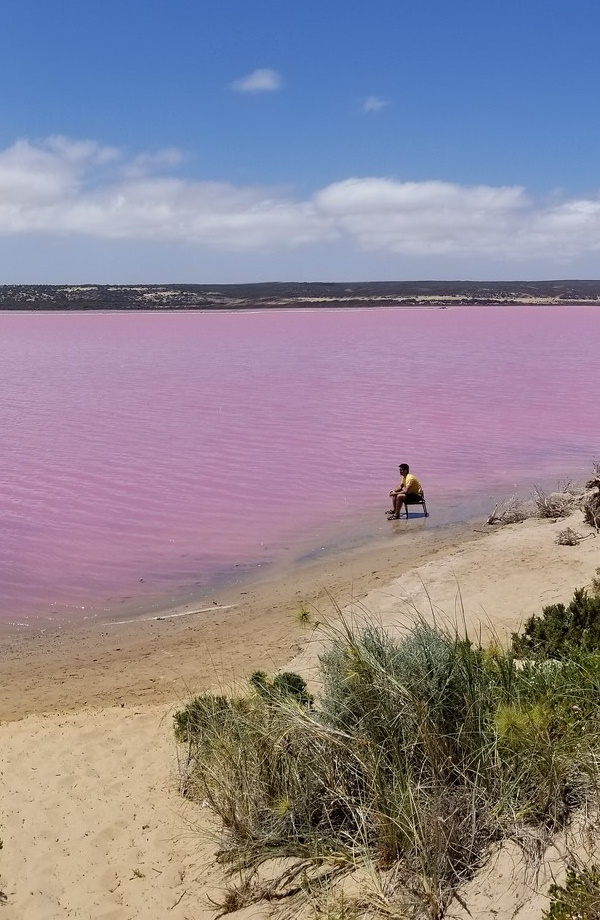 (images via Dan Nevill)
(images via Dan Nevill)
Old & busted: Blue Lagoon. New hotness: Hutt Lagoon! This 14km by 2 km (8.7 by 1.25 miles) pink paradise is located on the Indian Ocean coast of West Australia and unlike too many other curiously colorful bodies of water comes by its rosy tint naturally. Hutt Lagoon was once the estuary of the 60km (37 mile) long Hutt River but at some point in the prehistoric past, the river shifted its course and the former estuary was left isolated from both river and sea by a sandbar.
With its main inlet blocked, Hutt Lagoon is replenished via infrequent rainfall, inward seepage from groundwater, and through several small creeks. The meager inflow barely balances the effects of evaporation, which can be significant in hot, dry Western Australia where a record high temperature of 50.5 °C (122.9 °F) was recorded in February of 1998. Hutt Lagoon is very shallow; only about 1m (3.3 feet) deep in wetter times of the year.
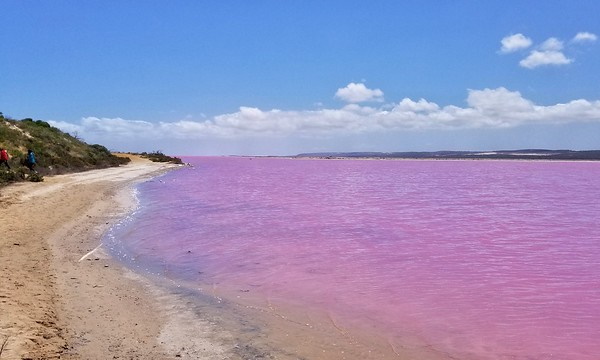 (image via: Dan Nevill)
(image via: Dan Nevill)
A Red-ly Harvest
The net result of the former Hutt River estuary becoming shallow Hutt Lagoon is that the salinity of the latter rose rapidly, forcing its resident algae population to adapt or die. The main two types of green algae in the lagoon (Dunaliella salina and Halobacteria cutirubrum) are spurred to create Beta-Carotene, a reddish-orange organic pigment that helps protect them from the effects of intense sunlight.
Beta-Carotene, along with related carotenoids such as Lycopene (found in tomatoes) and Lutein, also happens to be a potent anti-oxidant. The concentration of carotenoids in the waters of Hutt Lagoon not only turns the lagoon’s waters pink, it has also lured commercial activity that “farms” the halophile (salt-loving) algae for Beta-Carotene used in the production of pigment dyes, cosmetics and Vitamin A supplements.
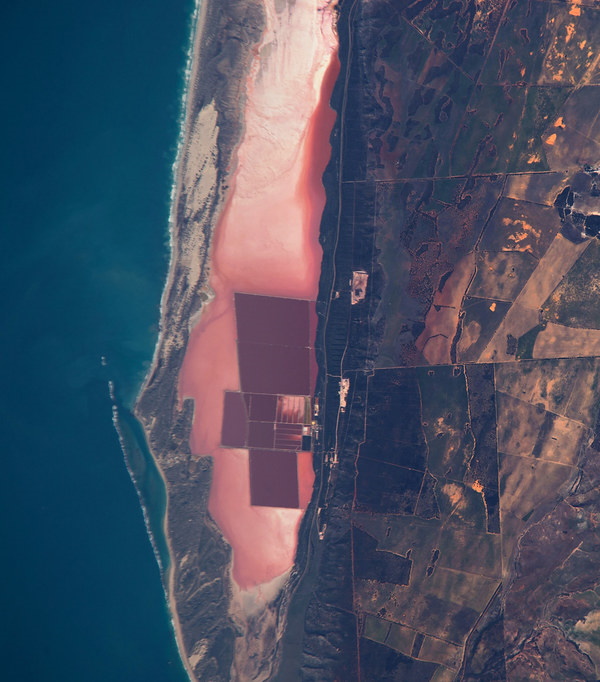 (image via: DLR_next)
(image via: DLR_next)
At present, about 450 hectares of Hutt Lagoon’s approximately 2,500 hectares have been sequestered by the Cognis company to extract Beta-Carotene for further processing. Even though Cognis runs the largest algae farm in the world, its activities use only 18 percent of Hutt Lagoon’s surface area. Cognis also raises (if such a term can be used) brine shrimp of the genus Artemia… we know them as Sea Monkeys. Those that don’t get freeze-dried become highly nutritious food for fish farms.
The commercial sections of Hutt Lagoon typically exhibit a much deeper pink to red hue compared to the rest of the natural lagoon – the rough pyramids of salt mined from these areas are tinted an even darker shade edging into the violet section of the spectrum. One might think Hutt Lagoon would be an ideal habitat for flamingos, as are other hypersaline lakes in Asia, Africa, South America and the islands of the Caribbean. Nobody’s given the birds the word, however, and Australia’s pink lakes (of which Hutt Lagoon is the largest) are devoid of any form of higher animal life.
A World Turned Upside-Down
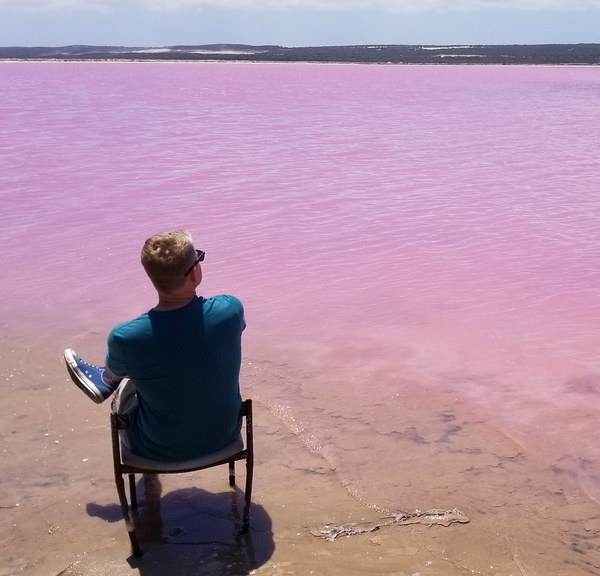 (image via: Dan Nevill)
(image via: Dan Nevill)
Images of tropical beaches have always been immensely popular due to their pleasing color contrasts and the relaxed, ethereal atmosphere they evoke in winter-weary workers. Some of the most alluring beach images depict sunrise or sunset scenes in which the rosy fingers of dawn reach out over the serene blue beauty of the sea.
Hutt Lagoon’s appeal – at least some of it – can be attributed to this “sunset on the beach” effect; though in this case the sky is blue while the sea is pink. Add to this upside-down imagery the knowledge that the location is in “the land down under” and it’s enough to (dare I say) make you want to flip out!
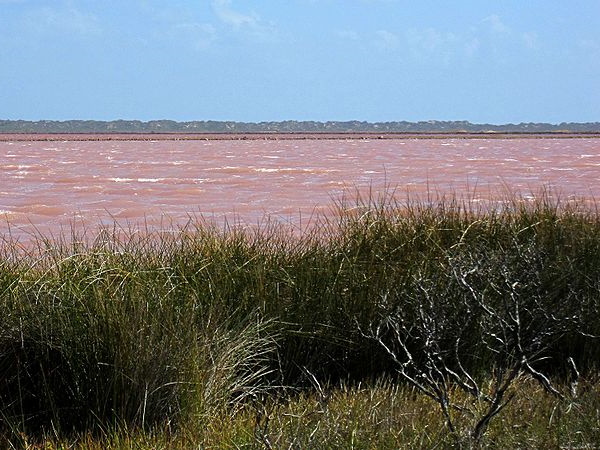 (image via: eutrophication&hypoxia)
(image via: eutrophication&hypoxia)
Looking to visit Hutt Lagoon and take in its breathtakingly unusual shade of pink up close and personal? Be prepared for a long and at times onerous journey. The nearest town is Gregory, formerly Port Gregory (until 1967) and home to just a few dozen residents.
Just south of Gregory you’ll find Geraldton, a town of about 37,000 which itself is situated 424 km (263 miles) north of Perth, the capital city of Western Australia. While Geraldton has much to offer the adventurous traveler, it’s the lure and allure of Gregory’s “Pink Lake” that draws visitors from far and wide.
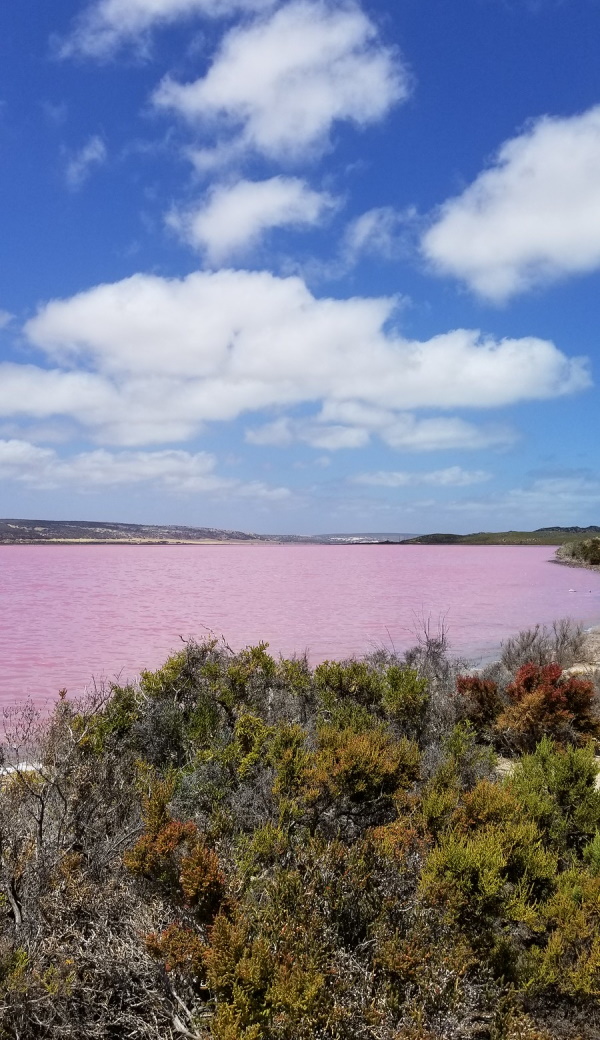 (image via: Dan Nevill)
(image via: Dan Nevill)
Can you swim in Hutt Lagoon or drink the water? Would you want to? Maybe some questions aren’t meant to be answered… and besides, isn’t looking out on a pretty pink lake beneath a cool blue sky and a brilliant golden sun enough in and of itself? Those who’ve done so rightly consider themselves lucky; you wouldn’t want to push your luck now, would you?

